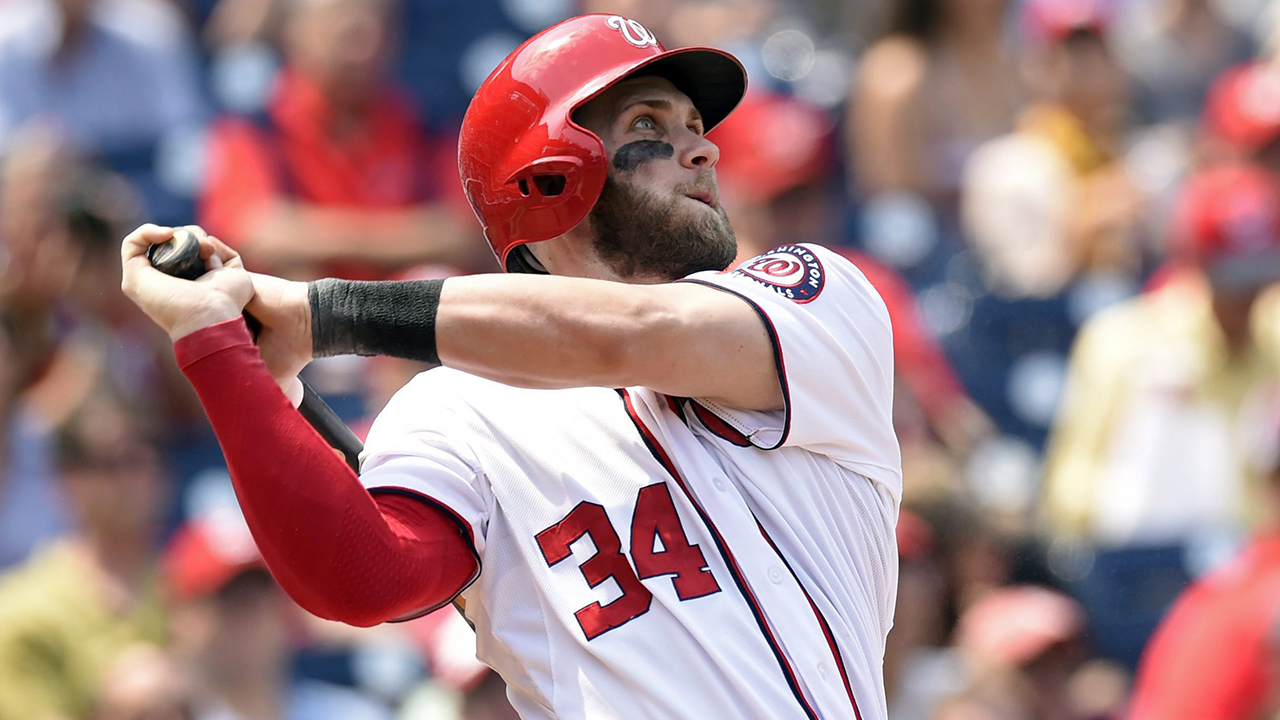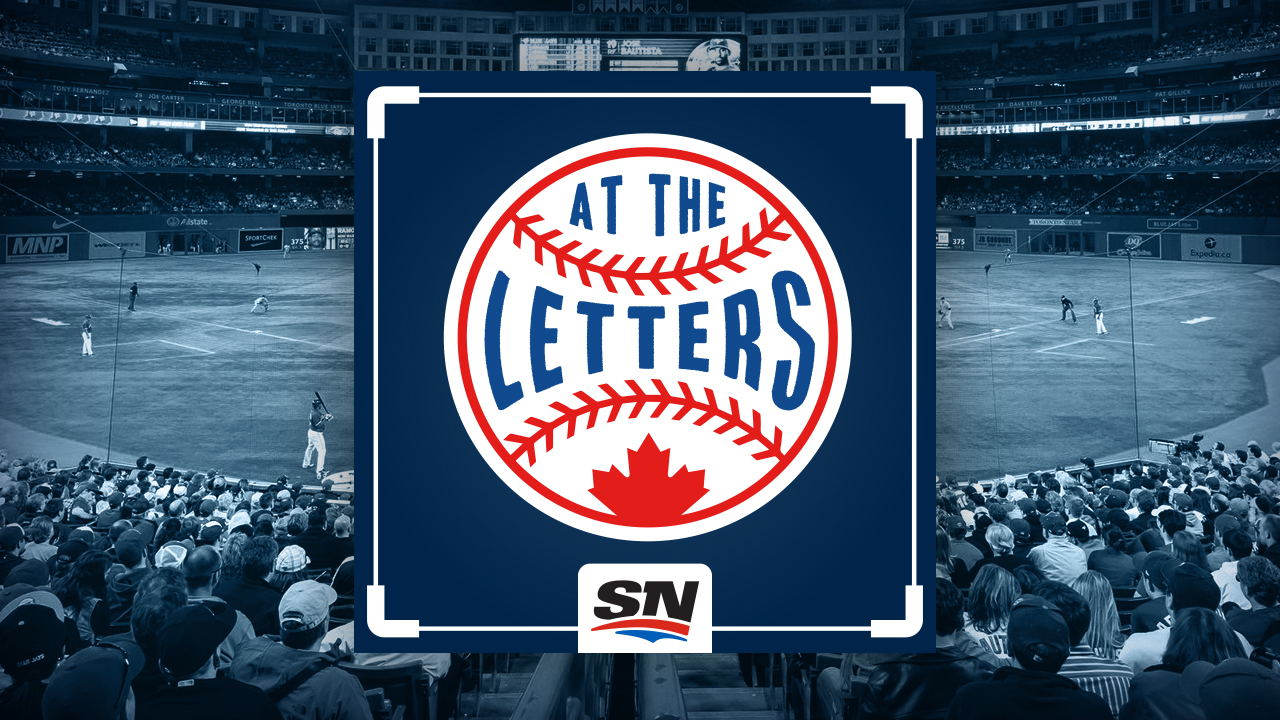For the season he’s hitting .415 with more walks than strikeouts. This month he’s hitting .464 with more home runs than strikeouts. Even though he’s the youngest player in the double-A Eastern League, 19-year-old Vladimir Guerrero Jr.’s making the case that he’s ready for the next challenge.
In all likelihood his next promotion will send him to triple-A, where he can continue working on his defence while testing his advanced hitting approach against pitchers one step removed from the majors. If he succeeds there, a higher-stakes challenge will present itself later this summer: how should the Blue Jays balance their top prospect’s long-term development and psyche while also attempting to field the best roster possible at the MLB level? When, in other words, should the Blue Jays promote Guerrero Jr. to the big leagues?
Every year, a lucky general manager or two wrestles with the question of when to promote an elite prospect. In some cases – Kris Bryant and Ronald Acuna Jr., for example – service time becomes a significant consideration. In others – and Guerrero Jr. may fall into this category – it’s not a driving factor in the decision.
Over the off-season, I asked some GMs what factors they weigh when assessing the readiness of top prospects. Performance matters first and foremost, but so many GMs also point to another key skill: a player’s ability to handle failure. As the discussion intensifies around Guerrero Jr., these answers are relevant in Toronto…
Farhan Zaidi, Dodgers GM
“It’s still got to be primarily driven by performance. Once you get to the double-A and triple-A levels, are you performing at a high if not elite level? Certainly in (Cody) Bellinger’s case I think his OPS was well over 1.000 (1.055) when we called him up.
“Then you look for the thoughts of your player development staff. Our farm director and our triple-A manager both said ‘this guy’s the best player in the PCL right now—by a lot.’ Not every promotion is going to be made that easy for you, when your staff’s telling you your guy’s the best player in a triple-A league, but it’s really a combination of those things. Your objective measures of readiness and your subjective measures.
“And the subjective is not just ‘do these guys pass the eye test with your player development people,’ but also just their emotional and intellectual maturity. The game at the big-league level requires so much more preparation and there’s way more advanced work and video work and meetings. These are really young men and the question of whether they can handle that level of sophistication has to be part of the equation.”

Jeff Luhnow, Astros GM
“A big part of it is the minor-league staff that work with the player on a daily basis. Are they advocating for the mental toughness? Because the chances are that the player’s going to get to the big leagues and at some point in that first year is going to struggle in a way that he’s never struggled before. That can have a negative effect if the player isn’t mentally tough and ready for it. Typically, I like to see them overcome some adversity in the minor leagues and work on something when they can show results, whether it’s cutting down on strikeouts or recovering from an injury in the case of Carlos Correa.
“Are the people that know him the best telling you that if that player comes up and struggles that they’re going to be OK?”

Mike Hazen, Diamondbacks GM
“Consistency is probably the biggest thing. For pitching it’s strike throwing, delivery, things like that. Commanding situations. As a hitter, the strike zone, control of at-bats. Consistency in those types of things is a good indicator, but no matter what there’s a proficiency in, I think there’s still a huge unknown to that leap. Because I think there’s a mental component to it that you can’t prepare for, because the environments are so vastly different. No matter how polished or advanced you think that player is, there’s still that unknown. So I still don’t think we have a 100 per cent handle on what that answer is.
“You can try to thrust them into situations, let’s say in the case of a reliever, we may try to put them in disadvantageous positions. It still doesn’t recreate the major-league level. Does a clean inning at the major-league level equate to bases loaded and nobody out at triple-A? I still don’t think so. But it’s still something. We’re trying to do the best we can to implement as many of those things as we can, I just don’t know how good they are.”
[relatedlinks]
Neal Huntington, Pirates GM
“The highest level’s more about mental and the ability to handle the adjustments, the ability to handle the adversity, the ability to handle the next deck of fans. It is really individualized by player and sometimes a player can dominate a lower level and not be ready for the next level. Sometimes a player can struggle a little bit, but he’s ready whether it’s a mechanical fix that he’s established and is rock solid or it may just be maturity and he’s ready to tackle that next challenge. It also becomes about opportunity: do you have a need or an opportunity that he’s ready to fill.”
Rick Hahn, White Sox GM
“With (Yoan) Moncada there was an adjustment that we wanted him to make defensively, which he was able to make at triple-A and we saw some consistency with that over the course of six or eight weeks. Then we thought he needed to be challenged by the speed of the game, which you can only really replicate at the big-league level.
“We also know that in a lot of these cases development continues at the big-league level. The very rare player comes to the major-league level as a finished product, so we try to set realistic goals for our players at the minor-league level: what we need to see from them before they’re promoted, much less from the big leagues, but certainly level to level. And we realize that sometimes they can answer all those questions and (yet) they need to be in Chicago to really be tested and put their finishing touches on their development.”

Michael Girsch, Cardinals GM
“The biggest thing for any player is how they’re performing. If you’re not performing well, it’s sort of a moot point. When you have an elite prospect who is performing, the second big thing is their make-up and how they handle stress. Even when you’re performing, sooner or later you go 0-for-5 or you go 0-for-15 over a weekend. That’s going to happen a lot more in the big leagues than it does wherever you are now, so how well you can handle that, how you react to it, how you go about your daily work – whether you have a plan or not. You can look at results or you can look at the process that leads to results. If that process is something that’s stable and thoughtful and not just ‘I happen to be good enough to dominate this level,’ then you have more confidence that you can move on to the next level and keep it going.
“Being grounded. Understanding that failure is part of the game. Especially if players can understand what their weaknesses are, because at the big-league level, they will attack it. The minor-league level they may or may not be able to or they may or may not be able to identify it because they don’t have all the same tools available. Players who are aware of and consciously working on their weaknesses make you feel more confident. The guys who are home run hitters who just want to hit bombs in BP, you’re sort of like ‘that works now, but …’”
David Forst, Athletics GM
“It’s not an exact science by any stretch. You have to know the player’s personality and ultimately how they’ll deal with failure. Any time you move a guy up, you have to expect it’s going to be an adjustment. We try and make sure guys are over-ready, whether that’s a number thing, whether that’s a confidence thing, whatever.
“(A concern emerges if) guys are taking their at-bats out onto the field with them. If you don’t succeed offensively then that affects your work ethic. You need guys who can continue their routine if they’re going to make more outs at the plate than they’re used to.”
Mike Rizzo, Nationals GM
“All the physical skills were there (with Bryce Harper). What we really watched hard was we wanted him to master each and every level that we put him in. At triple-A I saw him handle some very tough pitchers the right way. He was never over-matched against any pitcher or style of pitcher. A sidearm lefty or a hard-throwing righty.
“We felt he was ready, mentally tough enough, where if he did struggle at the big-league level he would recognize that he does belong there and it would just be a short-term (struggle) and then he would take off.”









